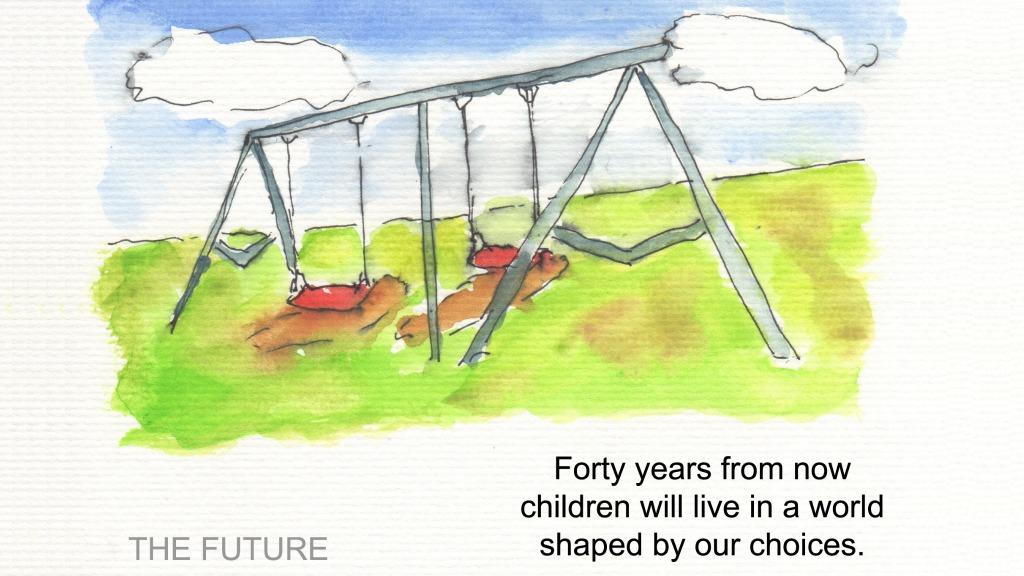When it comes to green lifestyles, decades of accumulated wisdom point to dense, efficient, mixed-use urban communities as the way of the future. People who live in cities generally have shorter commutes, the thinking goes, as well as greater access to public transit, grocery stores, karaoke bars, and other amenities, meaning they don’t burn as many fossil fuels just getting from one place to the next.
A new analysis from UC-Berkeley puts this assumption to the hard-data test, and, in a classic science move, finds that it’s a little more complicated than we thought.
The research, conducted by Daniel Kammen and Chris Jones and published in Environmental Science & Technology last month, gives us a bird’s eye view on the urban/suburban issue, if birds used the Mercator projection. The duo produced an interactive map of the U.S., factoring in regional sources of electricity, driving patterns, weather conditions, and consumption of goods and services to show the average household’s greenhouse gas emissions in any given zipcode. (For anyone keeping track, that is 31,531 zipcodes.) High-emissions-per-capita counties are marked in alarming shades of red, while less offensive districts are pure Eden in green.
While much of the surface area of the map is taken up by expansive, sparsely populated zipcodes painted a middling yellow-green color, more heavily inhabited swathes of the country begin to flare orange and red — as in, danger, high-consuming households — especially as you approach the big cities. Nevermind that the urban core as green as the olive in your artisan campari spritz — it’s still floating in a puddle of inefficiency.
Much of this difference has to do with transportation. Scrolling across the map, you’ll see a sidebar displaying the breakdown of emission sources. Most places, transportation’s column soars above the others, followed closely by housing — but scroll over a city and, instantly, its level drops to third or fourth place.
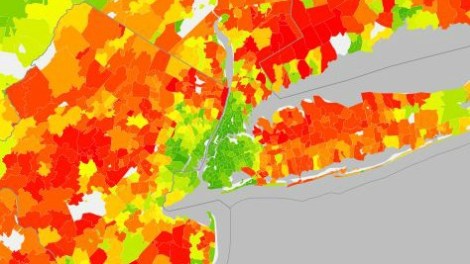
Jones and Kammen, Environmental Science & TechnologyNew York: on average, not so green.
“There’s no surprise,” Kammen told me. “If you live in a big city, not only is your transportation budget for commuting much less, but it’s often much more efficient to get packages and other materials, food, and FedEx deliveries.”
The compounding benefits of city living are flipped out in the ‘burbs, where each errand or task usually requires another expenditure of carbon, as suburbanites hop in their cars to get to work, to school, to the grocery store, to the gym. Or, like as not, to the city.
In fact, what jumps out here is the extent to which the most emission-intensive suburbs are clustered just outside the greenest cities. The denser the city, the redder the suburbs. Even the best, most efficient cities are mostly canceled out by the ring of suburbs surrounding them.
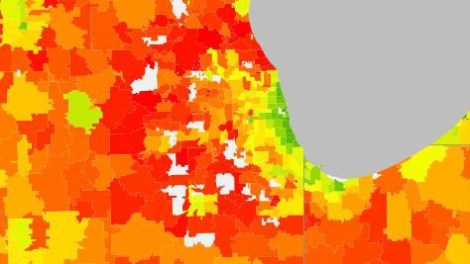
Jones and Kammen, Environmental Science & TechnologyChicago: room for improvement.
Because the Berkeley group’s data set is so large, it provides a picture of the consumption patterns across the whole country: an image both finely textured and remarkably repetitive. It is not just a handful of cities, but nearly every metropolis in the bunch where carbon reductions at the center are canceled out by worse-than-average emissions in the nearby ‘burbs. And in general, the bigger and greener the city, the worse its suburbs, with the highest-emitting households clustered in a ring between 15 and 45 miles from the city center.
Why, are these close suburbs so much worse than everywhere else on the map? Well, it’s not completely clear, but it probably has something to do with income and household size, both factors that have driven people out into picket-fence-land since time immemorial (or, I guess, since the early ‘50s).
“In fact, the strongest correlate of high greenhouse gas emissions is income, because when you spend more, you consume more,” Kammen says.
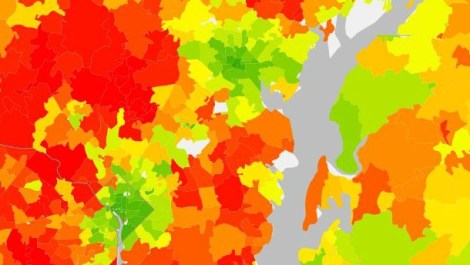
Jones and Kammen, Environmental Science & TechnologyD.C. and Baltimore: My eyes! They burn!
The other thing that leaps out of these images is that there is no perfect law of population density when it comes to cutting emissions. Denser, nearby suburbs tend to be more carbon-intensive than sparser fringe or rural areas. It’s the structure of a place — its system of roads, its clustered business centers (or lack thereof) — that may matter most when it comes to regional carbon emissions.
Take L.A. for example, which is — shockingly — not half bad, despite the fact that the sprawling city is often maligned for its traffic-jammed highways.
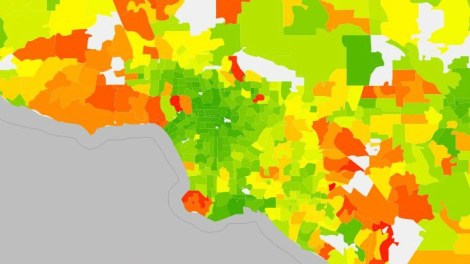
Jones and Kammen, Environmental Science & TechnologyLos Angeles: Not as bad as we thought.
“Los Angeles is kind of famous for tearing out the old trolley car line, and now they’ve rebuilt LA Light Rail — that’s actually going pretty well,” Kammen says, while admitting the metropolitan areas is still a mixed success. “It certainly has its bad suburban areas: Look out at Laguna Hills, where there are these cookie-cutter mansions and no shopping centers nearby, because [the developers] wanted to make the area high-cost. That’s a version of suburbia that doesn’t work.”
The version that does work looks a lot more like Portland. With the lowest rate of vehicle ownership per capita, urban growth boundaries, and light rail lines stretching deep into the suburbs, Portland may provide a model of how cities can grow intelligently. “You don’t need to go to downtown Portland,” Kammen says. “You can do everything from lattes with friends to restaurants to financial services in those suburbs.” (Kammen also references congestion taxes in London and extensive bike infrastructure in Stockholm as other examples of small upgrades that make a real difference.)
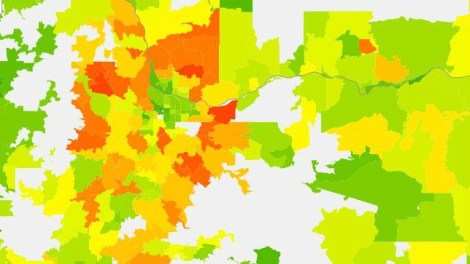
Jones and Kammen, Environmental Science & TechnologyPortland: so smug.
Urban-dwellers may congratulate themselves for their lean, green lifestyles, but in fact that eco-friendly city is the calm eye of a nasty, globe-warming hurricane. With that in mind, we’d be smart to stop thinking of cities and suburbs in isolation, and get real about how they relate to, and rely on, each other. There’s no ignoring our embarrassing, polluting relatives in the suburbs. Both urban and suburban areas are part of the same complex system — a system that has to improve as a whole if we’re going to get through this storm in one piece.
